One city, 50 killings: graphic charts show location of London's violent attacks
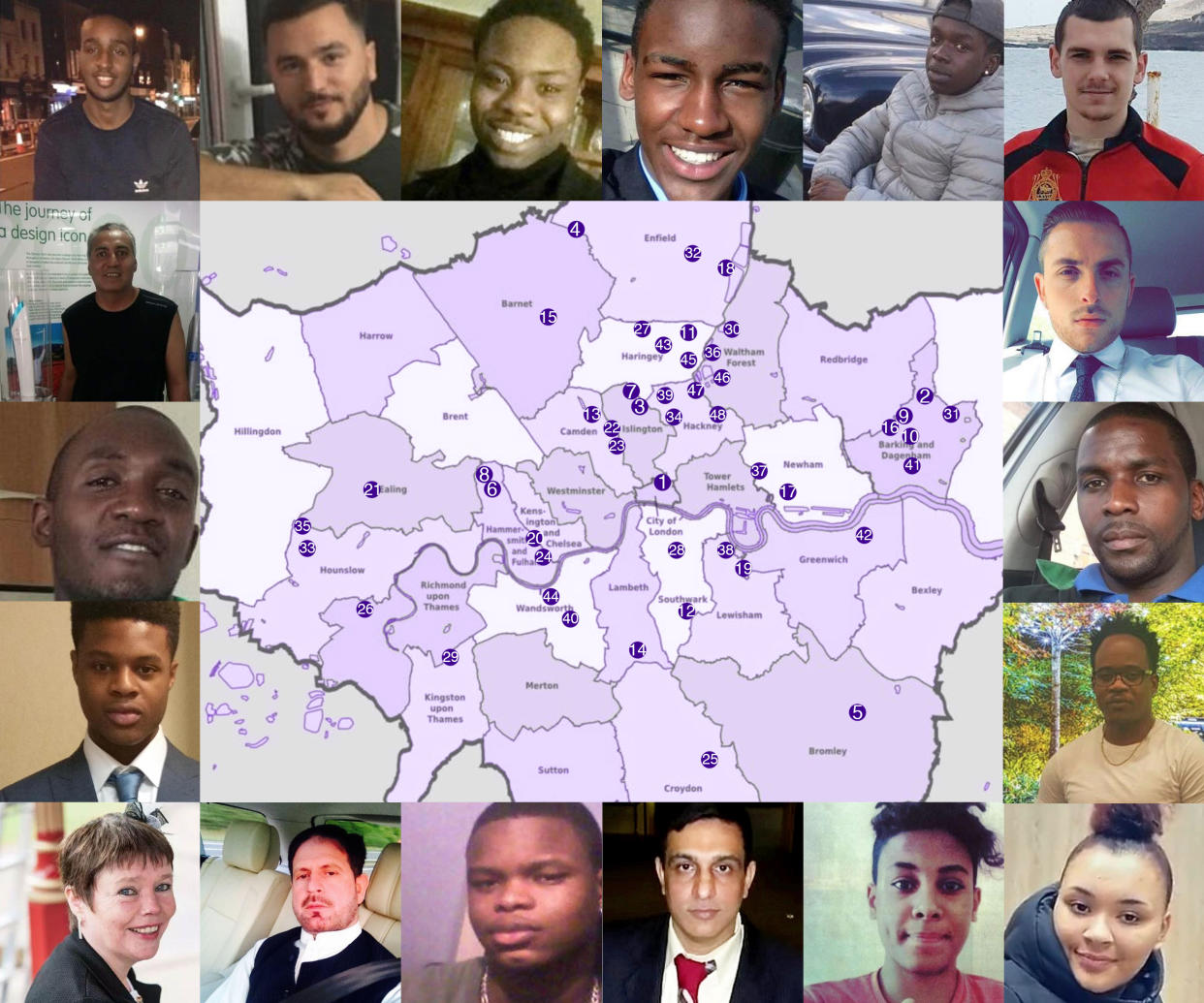
London has been rocked dozens of murders since the start of 2018, prompting widespread calls for immediate action in a bid to control the bloodshed on the streets of the capital.
The Met police has opened investigations into 55 murders this year – with all but one having taken place since January 1. But amid the violence, it can be hard to pinpoint why London’s murder rate has accelerated so much in the first four months of the year – and what is being done to curb it.
Here’s everything you need to know.
What’s going on?
London has been rocked by a series of murders, which have been widely linked to both gang violence and domestic incidents.
The first occurred on New Year’s Day when 20-year-old Steve Frank Narvaez-Jara was stabbed at a flat in Old Street.
Since then, more than 50 murders have occurred – including the stabbing of a 19-year-old man in Hackney last night.
How bad is 2018?
There has been 50 murders in London since January 2018, the same amount as New York.
But while New York’s murder rate has decrease since January, London’s has seen a significant rise.
Contrasting figures from the New York Police Department (NYPD) and the Metropolitan Police reveal narrowing murder rates between the two cities.
In February, some fifteen people were murdered in London during February compared to 11 in New York.
The same occurred only a month later, when the number of London murders for March hit 23 to New York’s 21 – with 13 of those in the UK capital coming in just 19 days.
When population is also accounted for, the rate of murders per 100,000 people was higher in London than in New York in February and March.
What has London Mayor Sadiq Khan said?
Tory police cuts have already cost London thousands of police officers & staff, most of our police station front counters & police buildings. City Hall's 2018/19 Budget invests an additional £110 million into the Met, boosting officer numbers & helping to tackle knife crime. pic.twitter.com/W9WD8mYfrl
— Sadiq Khan (@SadiqKhan) April 4, 2018
So far, Sadiq Khan has been relatively quiet in outlining specific action to curb the growing violence.
He has promoted the #LondonNeedsYouAlive campaign on Twitter, but he is yet to announce day-to day measures that could potentially curb the violence.
Most notably, he has pledged to invest an additional £110 million into the Met, boosting officer numbers & helping to tackle knife crime.
What have others said?
Labour MP David Lammy claimed that the violence was being exacerbated by turf wars between drug gangs.
‘What drives the gangs and the turf wars is an £11bn cocaine drugs market’, he told BBC Radio 4’s Today Programme.
‘We are the drugs market of Europe and I’m hearing nothing about what we’re going to do about that rising drugs market.
‘Drugs are prolific. It’s like Deliveroo. They’re as prolific as ordering a pizza. You can get them on Snapchat, WhatsApp. That in the end is driving the turf war and it’s driving the culture of violence.’
"Drugs are as prolific as ordering a pizza" – @DavidLammy on what's behind the spate of violence in London #r4today pic.twitter.com/FFgtxyTqHa
— BBC Radio 4 Today (@BBCr4today) April 5, 2018
Lammy also singled out London Mayor Sadiq Khan, and Home Secretary Amber Rudd, who he claimed were not taking the issue seriously enough.
‘I have not had a phone call from the home secretary, I have not had a phone call from the mayor, no one has come to visit my constituency. This is happening across London at large’, he said.
‘Frankly, I am sick of the political football. What I want is a political consensus.’
Liberal Democrats leader Sir Vince Cable tagged the Mayor of London and the Prime Minister as he tweeted about the recent surge in violent deaths: “Deeply concerned about the increase of murders in London. Devastating for families + communities who feel let down. Gov must address socioeconomic factors and provide adequate levels of funding for policing and protection on our streets.”
What’s being done?
Met Police chief Cressida Dick has announced the force will use ‘Al Capone’ tactics.
She told the Evening Standard 120 officers would be drafted into to a new task force to curb the rise in violent crime.
She said: ‘We will put even more effort into bearing down on violent crime.
‘You will see us being even more pro-active out on the streets. We will have a greater presence in the hotspots of violence and a focused effort, including intelligence-led stop-and-search and the use of specialists in covert tactics.
‘We will be looking to target the people we know are the most dangerous and get the intelligence to our local officers which they can use in a fast-time way.’
Who are the victims?
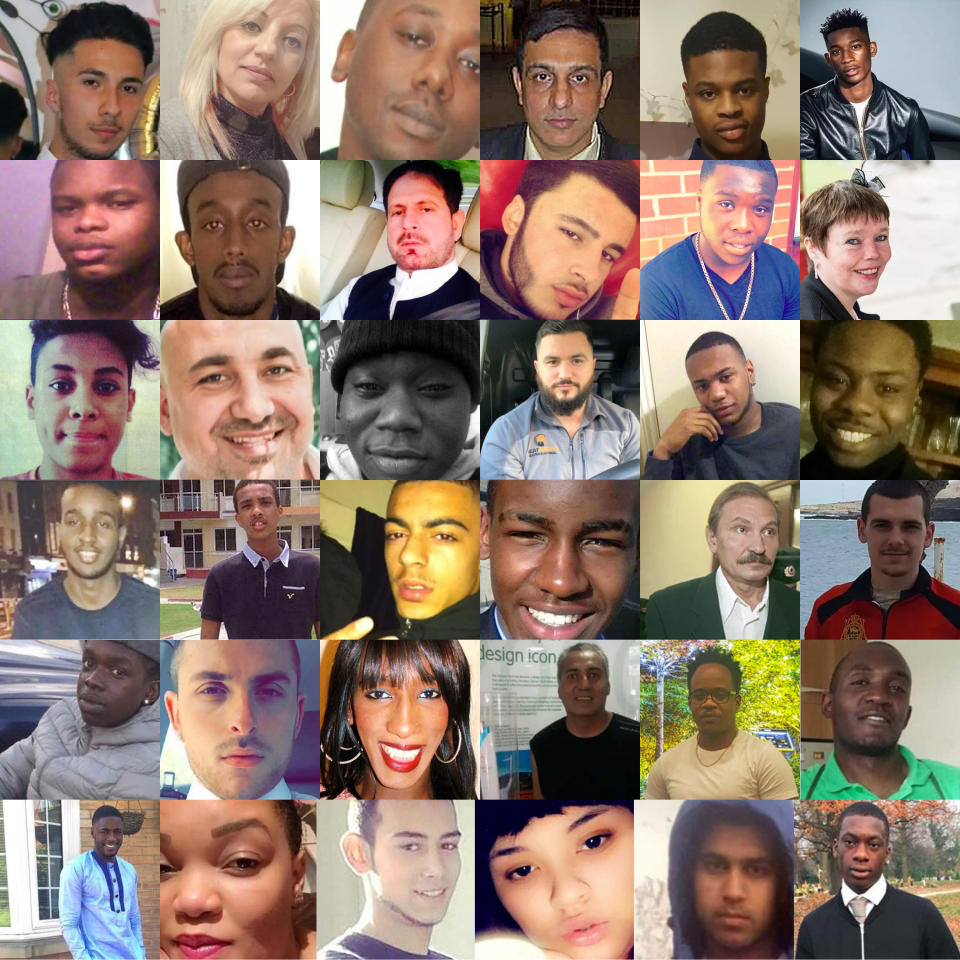
Here are the names of many of those killed, pictured in chronological order of death (left to right.)
Steve Frank Navarez-Jara was the first person to be killed in 2018. The 20-year-old was stabbed on New Year’s Day in Old Street, north London.
Elizabeta Lacatusu, 44, who came to London from Romania to work, was stabbed in Redbridge, east London on January 3.
Vijay Patel, 49, died on January 6 after being attacked outside a shop in Mill Hill Broadway after refusing a teenager trying to by Rizla cigarette papers.
Daniel Frederick, 34, died after being stabbed in Hackney on January 8 while walking home after attending a hospital check-up with his pregnant partner.
Dami Odeyingbo was only 18 when he was stabbed on January 9 in Bromley, south east London and died in hospital the next morning.
Harry Uzoka, 25, worked as a model in London and was knifed in the heart in Shepherd’s Bush on January 11. A fellow male model has been arrested on suspicion of murder.
Seyed Azim Khan’s body was found in Ilford Cemetery with extensive head injuries in February after he went missing on his way home from work on January 24.
Yaya Mbye, 26, died in hospital after being stabbed in Stoke Newington. east London, on January 28.
Lily-Mai Saint George was less than a year old when she was killed in Haringey on January 31. The cause and circumstances around her death is currently unknown, police say.
Khader Saleh, 25, was stabbed at Wormwood Scrubs prison on January 31.
Hassan Ozcan was just 19 when he died from multiple stab wounds in Barking, east London, on February 3.
Kwabena Nelson, a youth worker from Tottenham, died after being stabbed near his home on February 3.
Hannah Leonard, 55, was stabbed in a flat in Camden on February 8.
Sabri Chibani, 19, was stabbed in the chest in Streatham, south west London, on February 11.
Bulent Kabala was the first victim to be shot to death in 2018. The 41-year-old was shot on February 12 and died at the scene in Barnet, north London.
Lord Promise Nkenda was just 17 when he was stabbed in Canning Town, east London, on Valentine’s Day.
Lewis Blackman, 19, was stabbed in the early hours of February 18 after going to a house party in Kensington. He died outside the former home of Queen frontman Freddie Mercury.
Jozef Boci, 30, suffered serious head injuries after being attacked on the street in Greenwich on February 17 and died in hospital from his injuries just under a week later.
Rotimi Oshibanjo, 26, was stabbed in Southall on February 19 and died from his injuries.
Sadiq Mohammed, 20, died after being stabbed in Camden on February 20.
Abdikarim Hassan, 17, and friend of Sadiq, died on the same night after also being stabbed in Camden.
A 24-year-old was shot and killed in Westminster on February 20. Police are waiting for permission from the family to release the name of the victim.
Later the same day, her husband and two young sons were discovered at Birling Gap seafront, East Sussex, with all three having died from “multiple injuries consistent with falling from a height”.
Kelva Smith was 20 when he died after being stabbed in the stomach in Croydon, south London.
Kelvin Odunuyi, 19, was shot outside a cinema in Wood Green on March 8.
Julian Joseph, 36, died in hospital after being attacked and suffering a serious head injury on a bus in New Cross on March 12.
Nikolai Glushkov is the oldest person to have been killed in 2018 at the age of 68. He died from compression to the neck in New Malden on March 13.
Joseph William-Torres, 20, was shot in a car in Walthamstow on March 14.
Lyndon Davis was 18 when he was stabbed in Chadwell Heath on March 14.
Naomi Hersi, 36, was found with stab wounds at a hotel near Heathrow Airport on March 16 and was pronounced dead 30 minutes later.
Russell Jones, 23, died after suffering from stab injuries and a gunshot wound in Enfield, north London, on March 17.
Balbir Johal, 48, was admitted to hospital with stab wounds after being attacked in Southall on March 19 and died a few hours later.
A 41-year-old was stabbed in Waltham Forest, east London, on March 19, but has yet to be formally identified by the police.
Beniamin Pieknyi, 21, was found with stab wounds at the Stratford shopping centre in East London, on March 20 and was pronounced dead at the scene.
Abraham Badru, 26, was shot in Dalston on March 25.
Leyla Mtumwa, 36, was found with stab wounds at a home in Haringey on March 30.
An 80-year-old woman died in hospital after an incident in Camden on March 31. Police have not given any more details about why this is a murder investigation.
A 20-year-old was stabbed in Wandsworth on April 1, but police have not formally identified the victim.
Tanesha Melbourne was shot in the chest on April 2 after a drive-by shooting in Tottenham, north London.
Amaan Shakoor, 16, was shot in the face, also on April 2 in Walthamstow and died a day later in hospital.
Israel Ogunsola died in Hackney after being stabbed, also on April 4. He approached police who performed first aid but he died at the scene after 25 minutes.
Those not pictured, whose information is either unknown or has not been released are:
Juan Olmos Saca, 39, was stabbed in the chest in Peckham, south east London, on the January 29 and died a week in hospital.
Saeeda Hussain, 54, was stabbed at a house in Ilford on February 13 and died from her injuries.
Mark Smith, 48, died from multiple injuries after being found unconscious in Waltham Forest on February 15.
Michael Boyle, 44, died from a single stab wound to the chest. He was attacked on 25 February and died in hospital on March 10.
Christopher Beaumont, 42, was stabbed at a house in Hammersmith on March 1.
Laura Figueira, 47, was found dead at her home in Richmond, west London, on 5 March having suffered from stab wounds.
Tyrone Silcott, 41, died after being stabbed in Hackney on March 18.
A 59-year-old was killed in Barking on March 25, but police have not released any more information or formally identified the victim or how the the death occurred as a post-mortem has not taken place.
David Potter, 50, was found dead inside a house in Tooting High Street on March 26 after suffering from stab injuries.
Reece Tshoma was 23 when he was stabbed in Plumstead, south east London, on March 29.
A 38-year-old man has died after being stabbed in the chest at a house in Lewisham on April 4, but has not been formally identified.
A man in his 50s was pronounced dead at a bookmakers in Upper Clapton on April 4 following reports of an altercation with another man.
Where have they taken place?
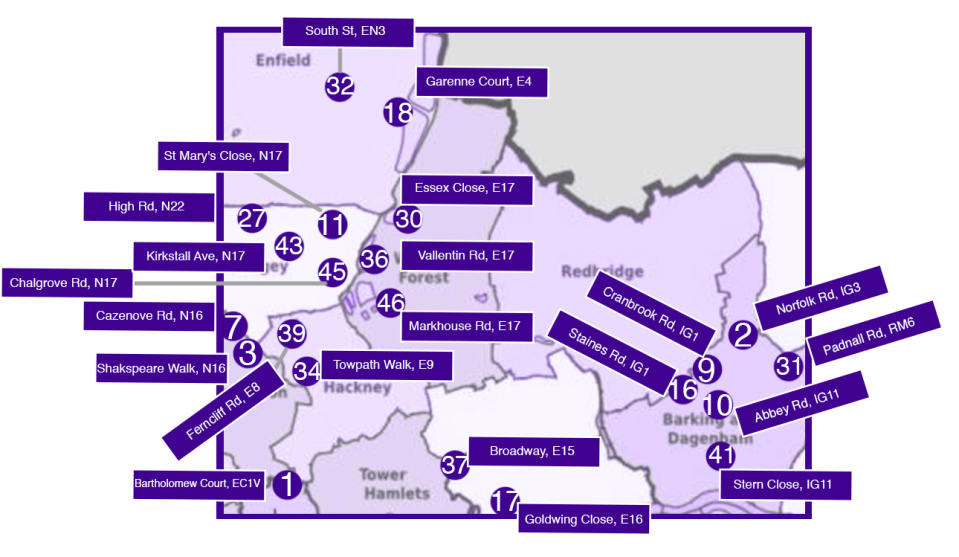
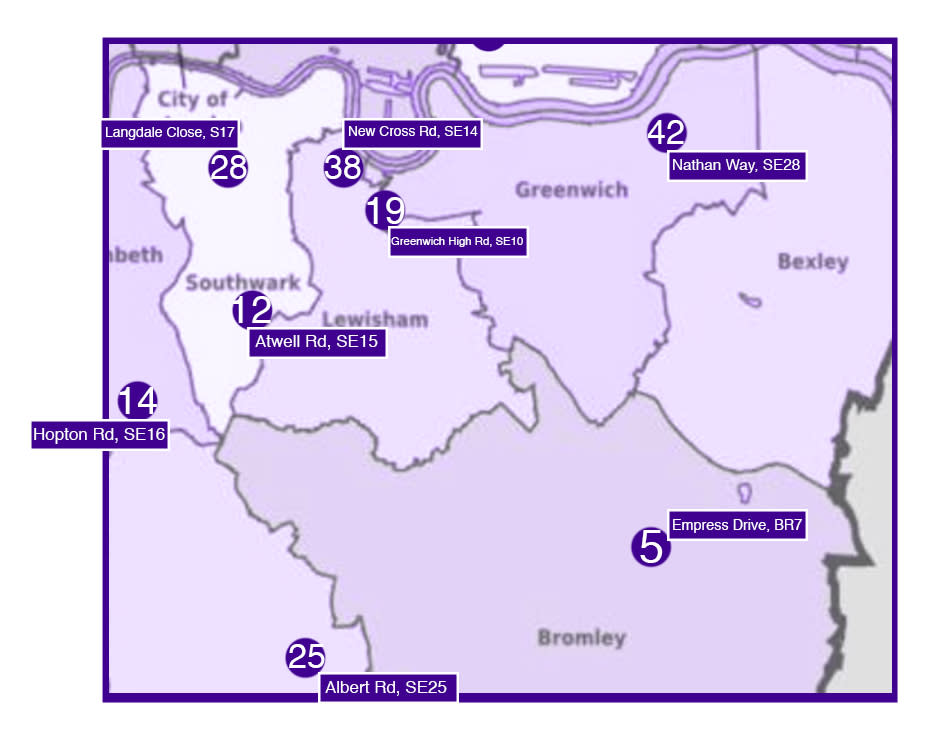
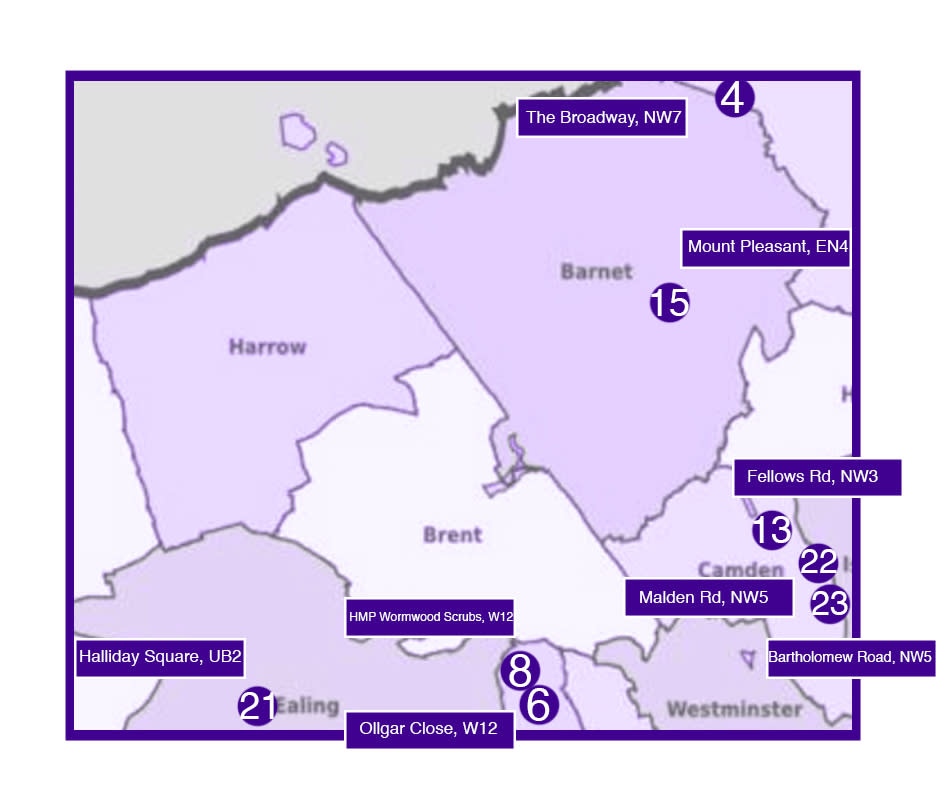

South East London (Yahoo News UK)

 Yahoo News
Yahoo News 

